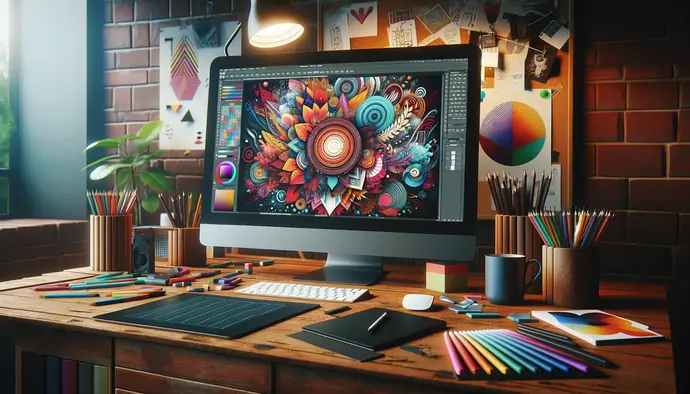Pulse of Information
Your source for the latest insights and updates.
Design Like a Pro: Transform Your Ideas into Visuals
Unleash your creativity! Discover expert tips to turn your ideas into stunning visuals and elevate your design skills today!
5 Fundamental Principles of Professional Design You Need to Know
Understanding the five fundamental principles of professional design is essential for anyone looking to create impactful visuals. First, the principle of contrast plays a critical role in ensuring that important elements stand out. By using variations in color, size, and shape, designers can guide the viewer’s eye and focus attention where it's needed most. Secondly, the principle of alignment is essential for organizing content cohesively. Proper alignment creates a sense of order and connection between different elements, making the design easier to navigate.
Another vital principle is repetition, which reinforces themes and enhances the overall aesthetic of the design. By consistently using colors, fonts, and graphical elements, you can create a unified look that resonates with the audience. The fourth principle, proximity, suggests that related items should be grouped together to improve clarity and comprehension. Finally, the principle of balance ensures that the visual weight of elements is evenly distributed, creating harmony in the design. Together, these principles form a solid foundation for achieving professional-quality designs.

How to Turn Your Ideas into Stunning Visuals: A Step-by-Step Guide
Turning your ideas into stunning visuals is a creative process that can greatly enhance your project or presentation. Start by brainstorming the core concept of your idea, jotting down keywords and phrases that encapsulate your vision. Once you have a clear idea, create a mood board using platforms like Pinterest or Adobe Spark to gather inspiration and set a visual tone. Here are the steps to follow:
- Define your message: What do you want to convey?
- Select your style: Will it be minimalist, vintage, modern, or illustrative?
- Gather resources: Collect images, colors, and typography that align with your idea.
Once you have your resources, it’s time to bring everything together. Use design software such as Adobe Illustrator, Canva, or even free tools like GIMP to start creating your visuals. Remember these important tips: Keep it simple to avoid visual clutter and balance your elements for a harmonious composition. Furthermore, don’t hesitate to experiment with different layouts and color schemes until you find the one that resonates best with your initial concept. By following these steps, you’ll be well on your way to transforming your ideas into stunning visuals that captivate your audience.
What Tools Do Designers Use to Create Amazing Graphics?
In the dynamic world of graphic design, designers utilize a variety of tools to bring their creative visions to life. The most popular software includes Adobe Creative Suite, particularly Photoshop for photo editing, Illustrator for vector graphics, and InDesign for layout design. These tools are renowned for their powerful features and versatility, allowing designers to create stunning visuals that capture attention. Additionally, platforms like Canva and Figma have gained popularity for their user-friendly interfaces, making graphic design accessible to both beginners and professionals alike.
Beyond software, many designers rely on various resources to enhance their workflow. For example, utilizing stock photo libraries like Unsplash or Shutterstock can provide high-quality images, while websites like Behance and Dribbble offer inspiration from fellow creatives. It's also common for designers to use project management tools such as Trello or Asana to streamline their processes and collaborate effectively with clients and teams. By combining these tools, designers can create amazing graphics that not only meet client expectations but also stand out in a competitive landscape.